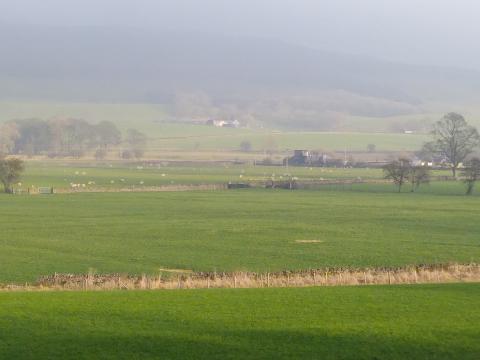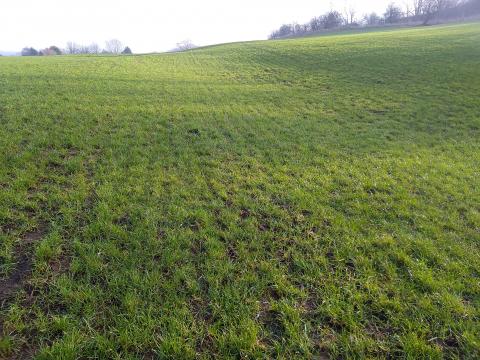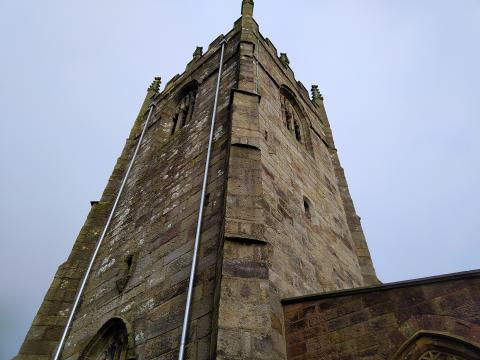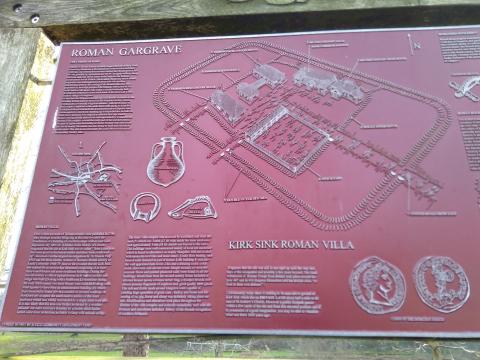Gargrave's Roman Villa

On my way to visit an honest gentleman of Threshfield last week, I called at the village of Gargrave. Parking by the Mason’s Arms and briefly inspecting the parish church, I took the public footbath to Kirk Sink Farm. Close by is the site of a large, Roman villa. Although there is no access, the right of way ascends the hill upon which the Skipton-Lancaster railway sits, and a view is afforded. On a bright January afternoon, the grass is short and the shadows long, which helps magnify the remaining earthworks.
It seems quite remarkable that people who were alive at the time of the last apostles and earliest Christians were beginning to plough that land over which we still walk (the villa is dated between 69-96AD). Indeed, a hoard of 83 Roman coins have just been found a couple of miles from our chapel. The Roman road between Ilkley and Ribchester, by which our chapel sits, would have given the Gargrave villa good access to markets for its produce, including the military base at Elslack. It might even have been specifically established to feed the 400-500 auxilliary cavalrymen based there. I wonder if and when someone travelled that road with the good news of Jesus Christ, bringing hope to the slaves who toiled in those fields and the foremen who were tasked with meeting the quotas. To some early Roman settler or estate manager, the affairs of some Jews on the other wide of the world was an irrelevance, a distraction from the business of tilling the ground and rearing livestock. Yet the gospel of Jesus was to survive that great villa. Gargrave’s oldest building is now its church tower, while the great villa complex with its bathhouses, defensive ditches and mosaic floors lies buried beneath the soil.



- Log in to post comments


 Sunday Worship 10.45am & 6.00pm
Sunday Worship 10.45am & 6.00pm